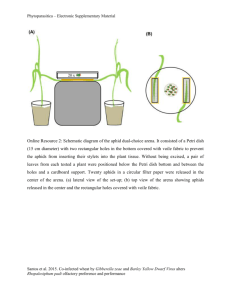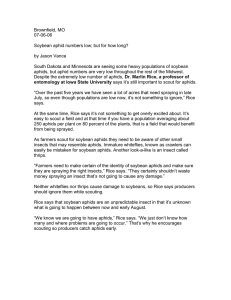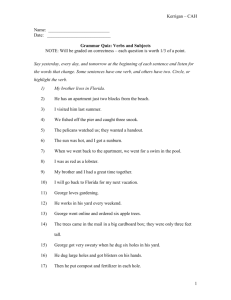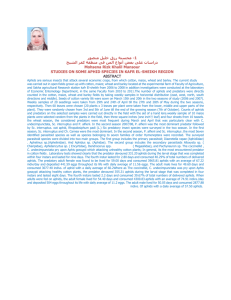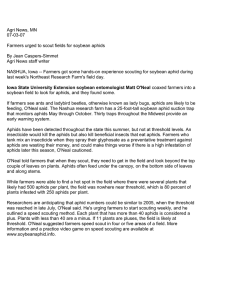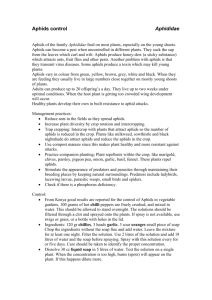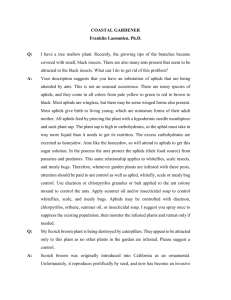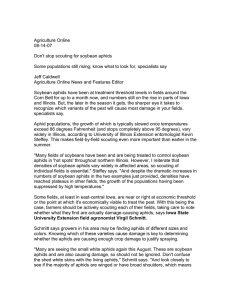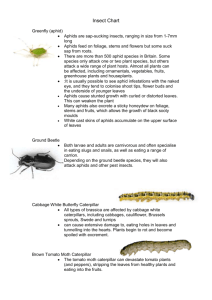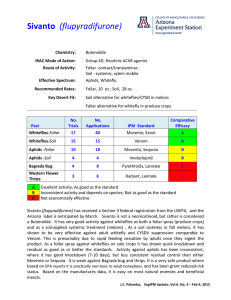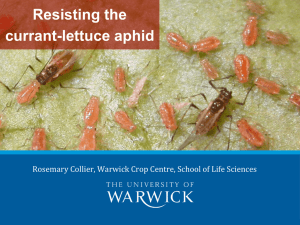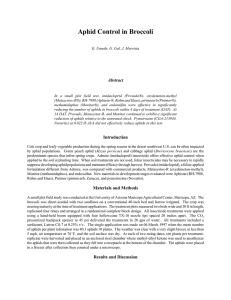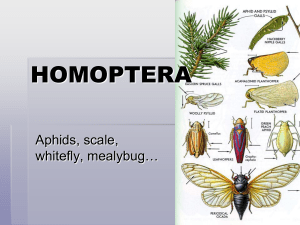Mathematical Modeling | Suggested Problems * Fall 2007
advertisement
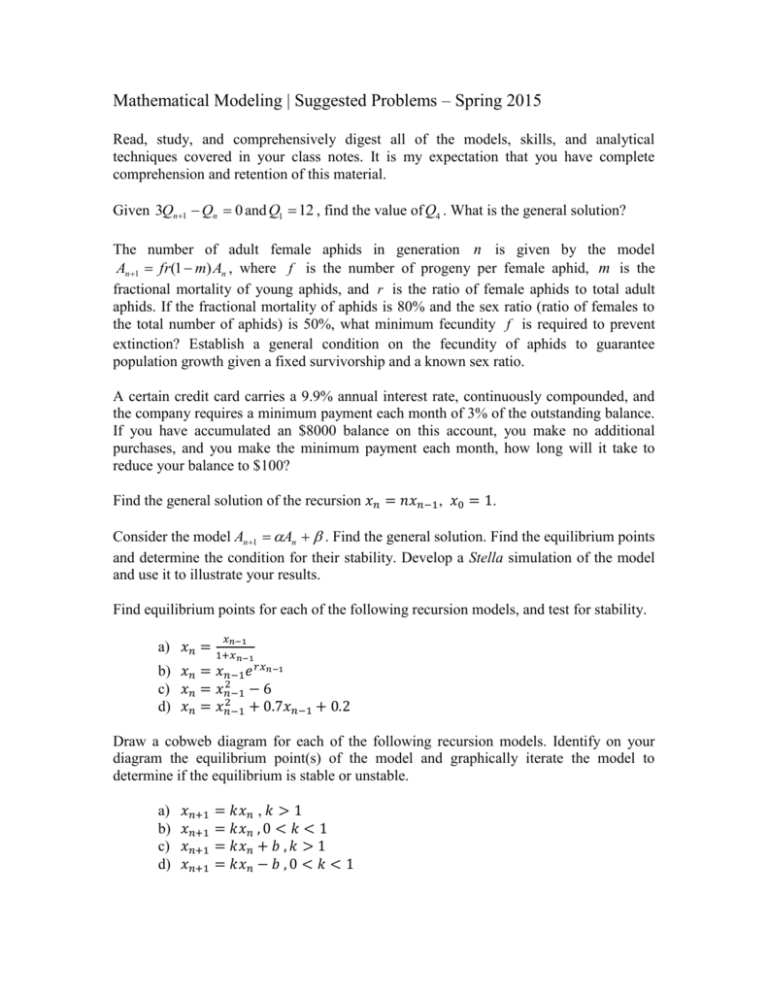
Mathematical Modeling | Suggested Problems – Spring 2015 Read, study, and comprehensively digest all of the models, skills, and analytical techniques covered in your class notes. It is my expectation that you have complete comprehension and retention of this material. Given 3Qn1 Qn 0 and Q1 12 , find the value of Q4 . What is the general solution? The number of adult female aphids in generation n is given by the model An1 fr(1 m) An , where f is the number of progeny per female aphid, m is the fractional mortality of young aphids, and r is the ratio of female aphids to total adult aphids. If the fractional mortality of aphids is 80% and the sex ratio (ratio of females to the total number of aphids) is 50%, what minimum fecundity f is required to prevent extinction? Establish a general condition on the fecundity of aphids to guarantee population growth given a fixed survivorship and a known sex ratio. A certain credit card carries a 9.9% annual interest rate, continuously compounded, and the company requires a minimum payment each month of 3% of the outstanding balance. If you have accumulated an $8000 balance on this account, you make no additional purchases, and you make the minimum payment each month, how long will it take to reduce your balance to $100? Find the general solution of the recursion 𝑥𝑛 = 𝑛𝑥𝑛−1 , 𝑥0 = 1. Consider the model An1 An . Find the general solution. Find the equilibrium points and determine the condition for their stability. Develop a Stella simulation of the model and use it to illustrate your results. Find equilibrium points for each of the following recursion models, and test for stability. 𝑥 a) 𝑥𝑛 = 1+𝑥𝑛−1 𝑛−1 b) 𝑥𝑛 = 𝑥𝑛−1 𝑒 𝑟𝑥𝑛−1 2 c) 𝑥𝑛 = 𝑥𝑛−1 −6 2 d) 𝑥𝑛 = 𝑥𝑛−1 + 0.7𝑥𝑛−1 + 0.2 Draw a cobweb diagram for each of the following recursion models. Identify on your diagram the equilibrium point(s) of the model and graphically iterate the model to determine if the equilibrium is stable or unstable. a) b) c) d) 𝑥𝑛+1 𝑥𝑛+1 𝑥𝑛+1 𝑥𝑛+1 = 𝑘𝑥𝑛 , 𝑘 > 1 = 𝑘𝑥𝑛 , 0 < 𝑘 < 1 = 𝑘𝑥𝑛 + 𝑏 , 𝑘 > 1 = 𝑘𝑥𝑛 − 𝑏 , 0 < 𝑘 < 1 Solve each of the following difference equations. a) b) c) d) xn 5xn1 6 xn2 0, x0 2, x1 5 xn 2 2 xn1 xn 0 𝑥𝑛+2 + 𝑥𝑛 = 0 𝑥𝑛+2 − 𝑥𝑛+1 + 𝑥𝑛 = 0 Express our model for annual plant population growth below as a system of two firstorder recursion equations. Develop a Stella simulation of this system and use it to illustrate the condition for population growth derived in class. 𝑃𝑛+1 = 𝛼𝜎𝛾𝑃𝑛 + 𝛽𝜎 2 (1 − 𝛼)𝛾𝑃𝑛−1 Find the eigenvalues of the model 𝑅𝑛+1 = (1 − 𝑓)𝑅𝑛 + 𝛾𝑓𝑅𝑛−1 Find the general solution to the difference equations. a) 𝑥𝑛+3 + 5𝑥𝑛+2 − 𝑥𝑛+1 − 5𝑥𝑛 = 0 , 𝑥0 = 𝑥1 = 0 , 𝑥2 = 5 b) 𝑥𝑛+4 − 8𝑥𝑛+2 + 16𝑥𝑛 = 0 , 𝑥0 = 𝑥2 = 0 , 𝑥1 = 𝑥3 = 2 Find the general solution of the first-order linear system 1 𝑥𝑛+1 = 4 𝑥𝑛 + 𝑦𝑛 3 1 𝑦𝑛+1 = 16 𝑥𝑛 − 4 𝑦𝑛 𝑥0 = 1, 𝑦0 = 1 For what values of 𝛽 will the population modeled by the equations below grow? 𝐽𝑛+1 = 𝐽𝑛 + 𝐴𝑛 𝐴𝑛+1 = 𝛽𝐽𝑛 2 A population grows according to 𝑃𝑛+1 = [ 1 4 𝐽 ] 𝑃𝑛 where 𝑃𝑛 = [ 𝑛 ]. Determine, using 0 𝐴 𝑛 4 paper and pencil only, the long-term growth rate and the stable age-structure of the population. Use Maple to check your results. Find the stable oscillations of the recursion equation𝑥𝑛+1 = 4𝑥𝑛 (1 − 𝑥𝑛 ). Suppose that a, b, and c are a 3-cycle for a function f defined by f(x)=2x for x<1/2 and f(x)=2-2x for x>1/2. Find this 3-cycle if a<1/2 while b and c are both greater than ½.
